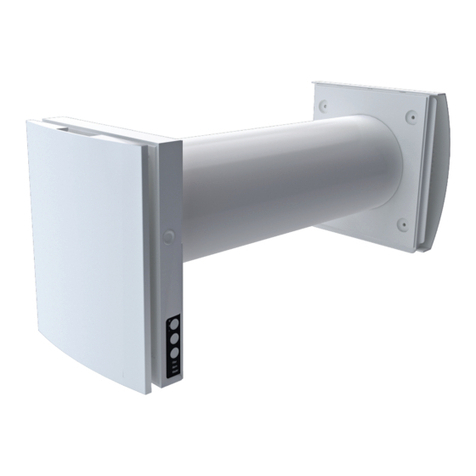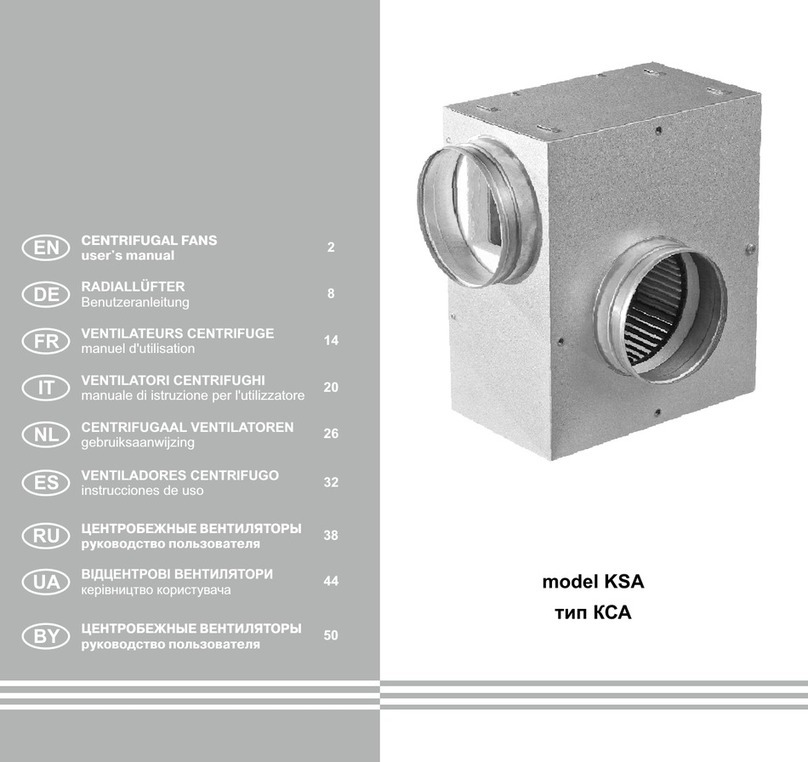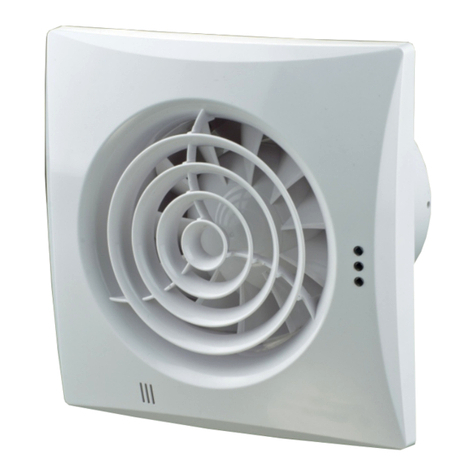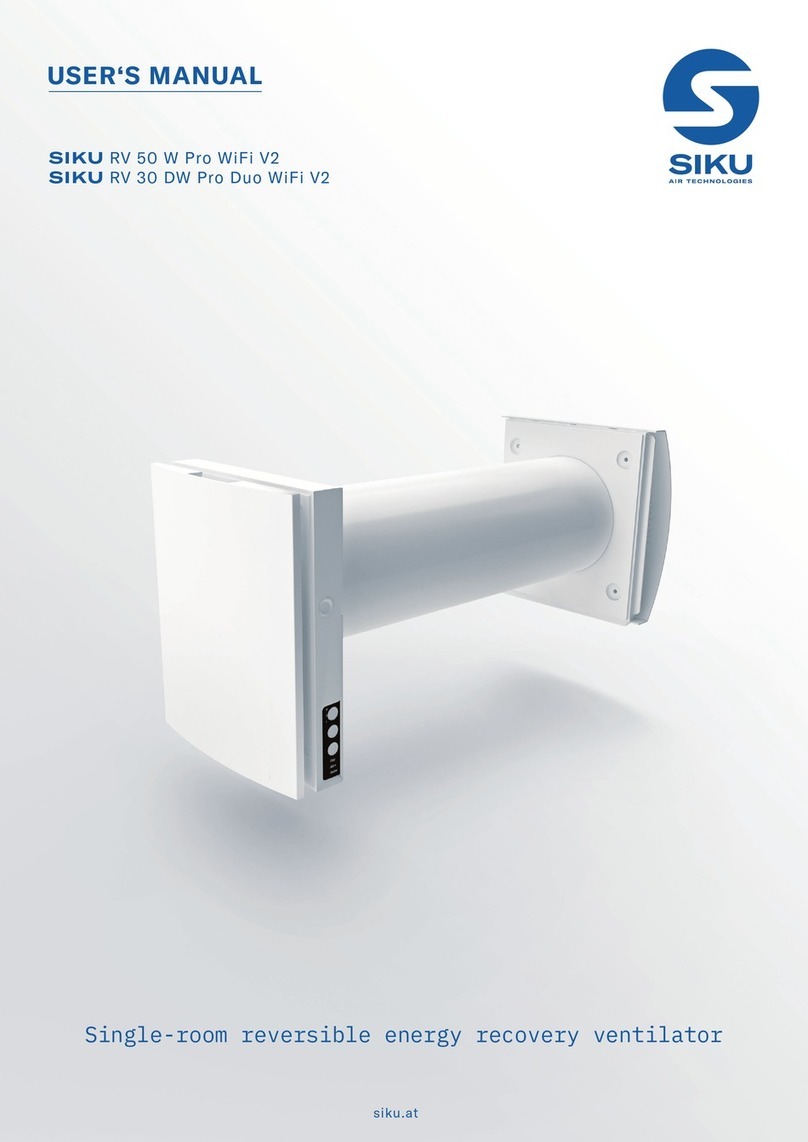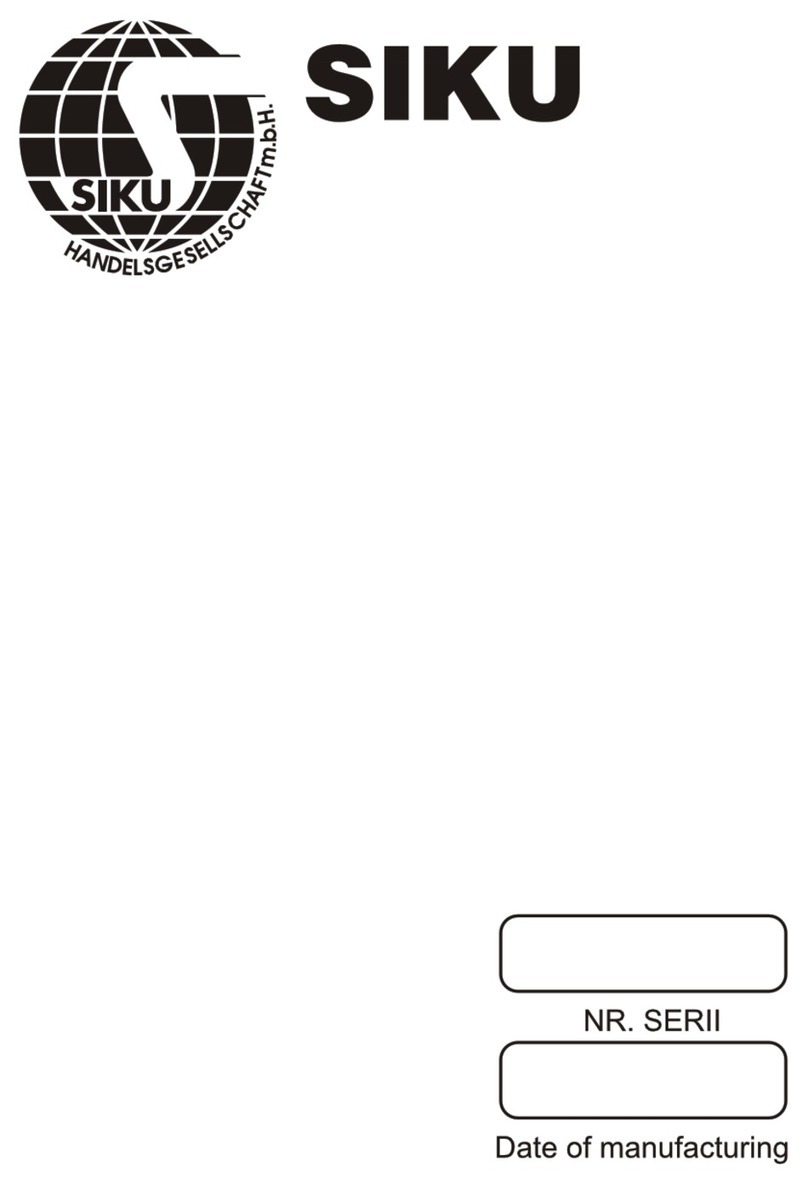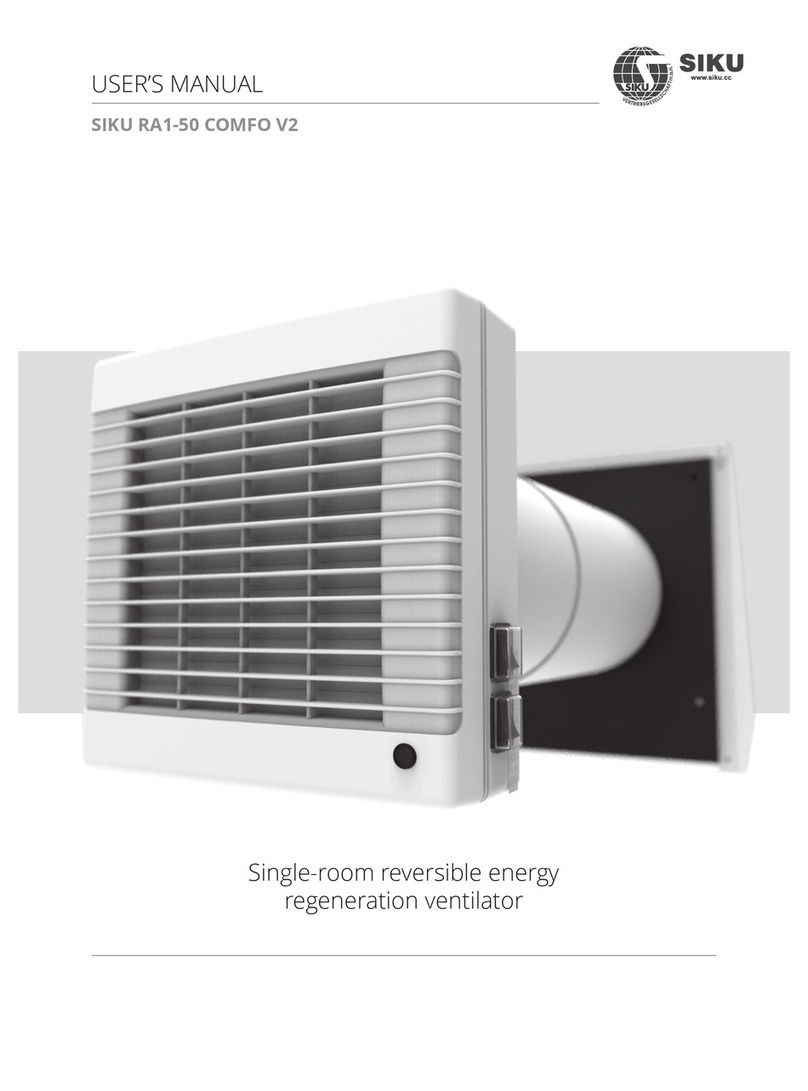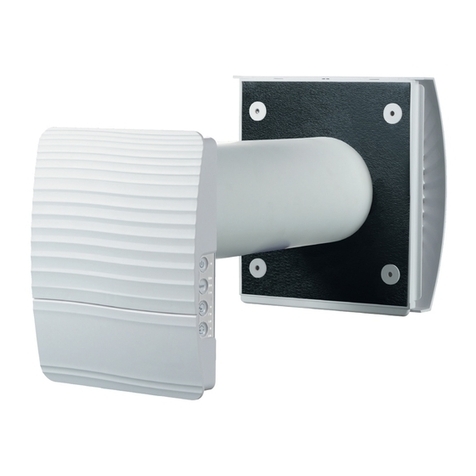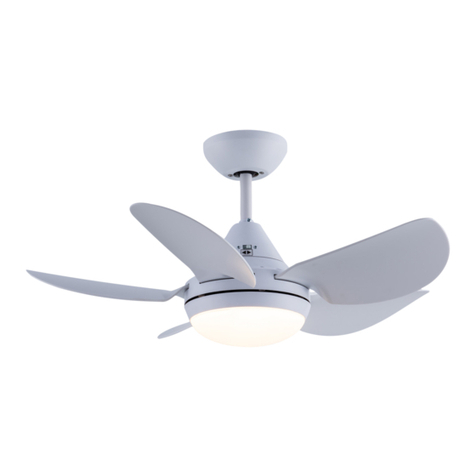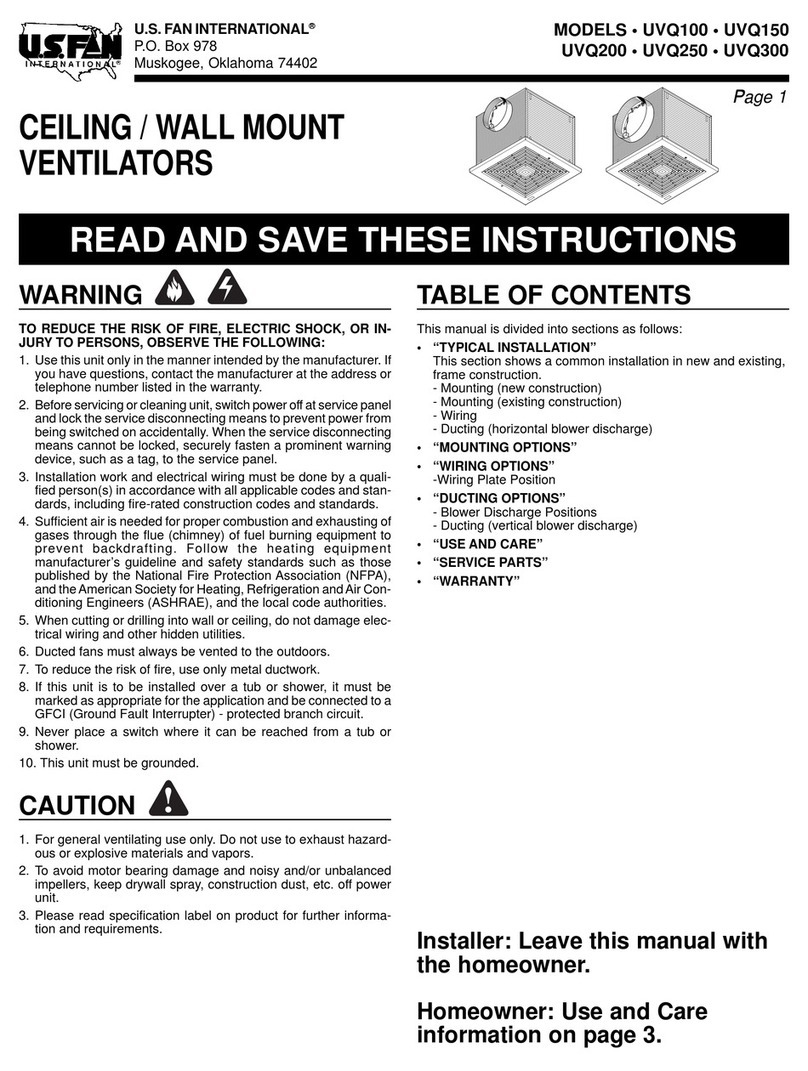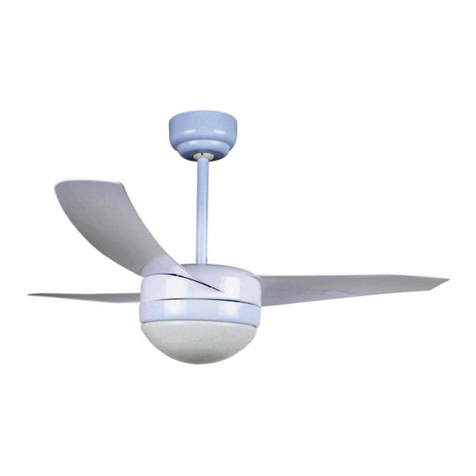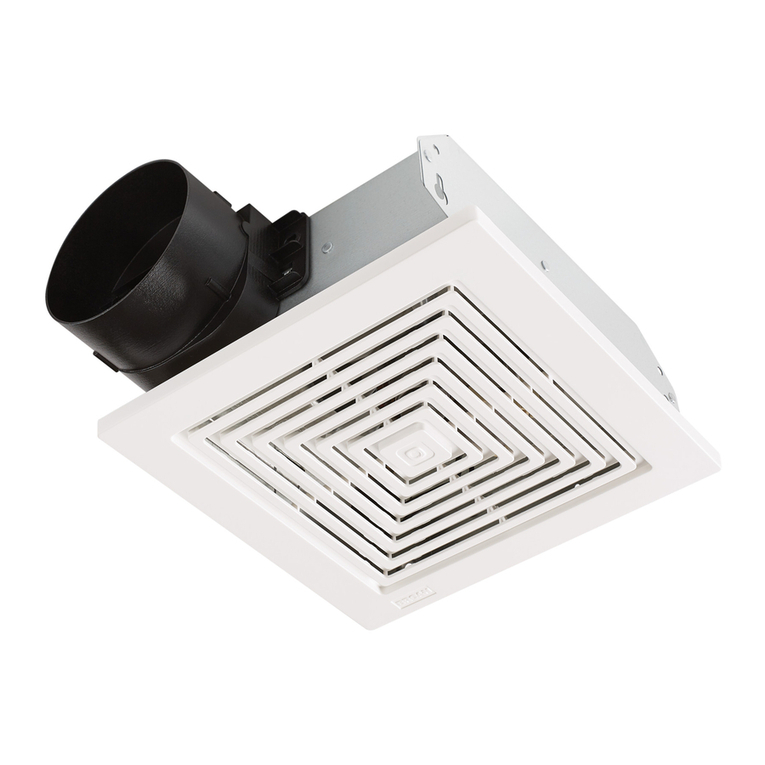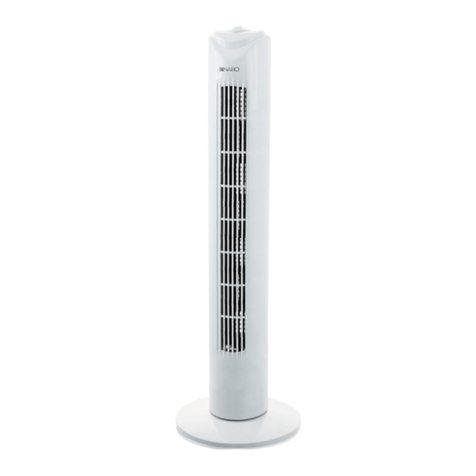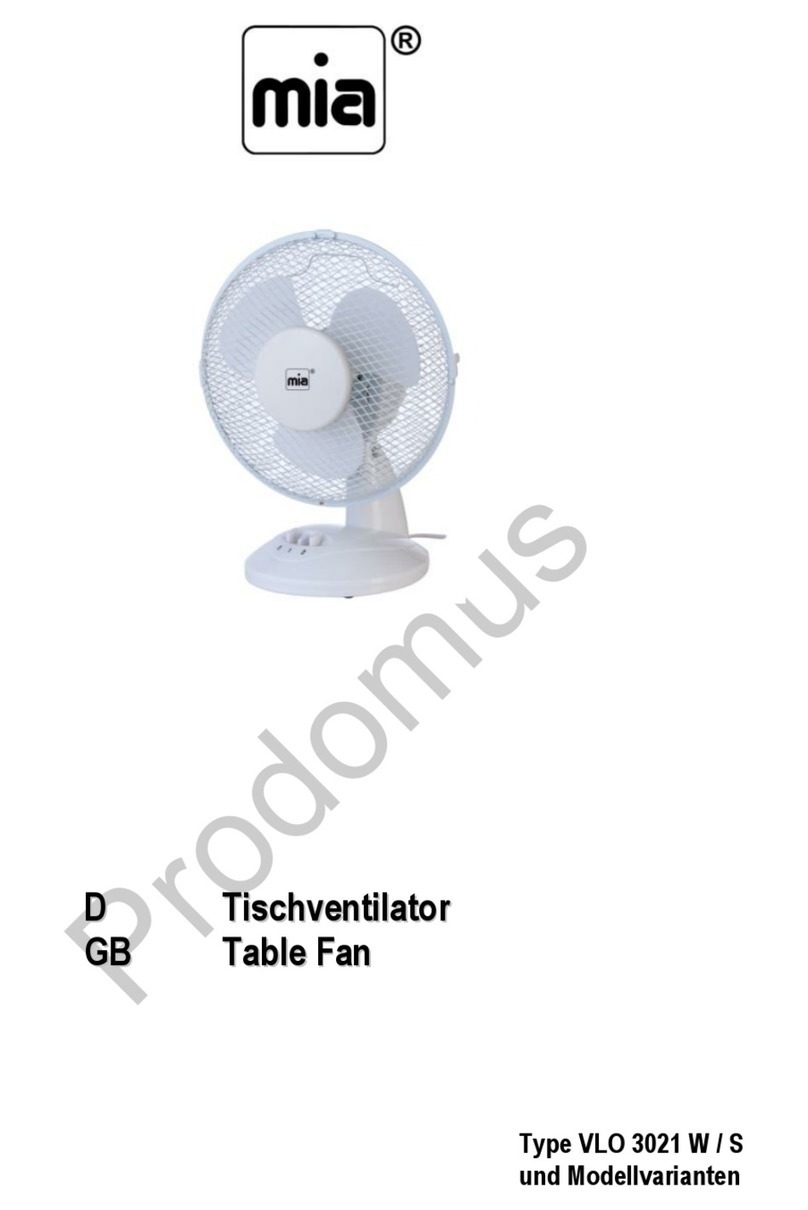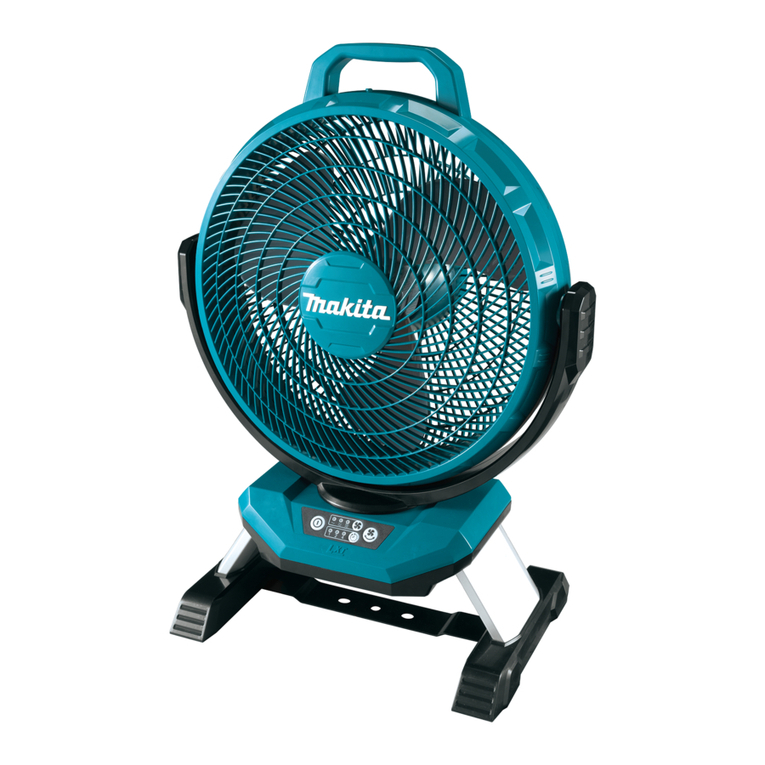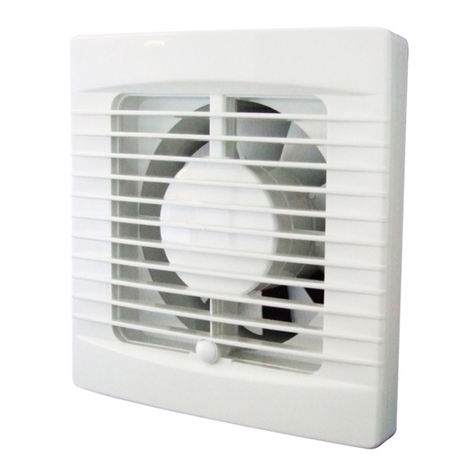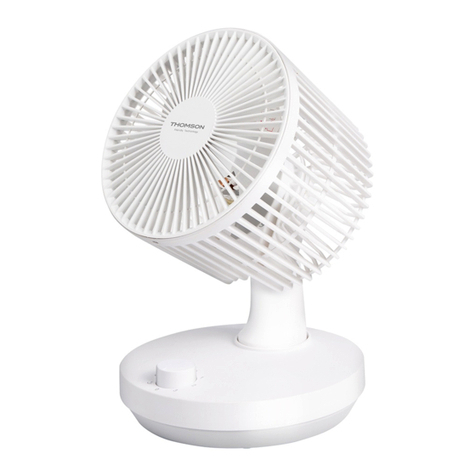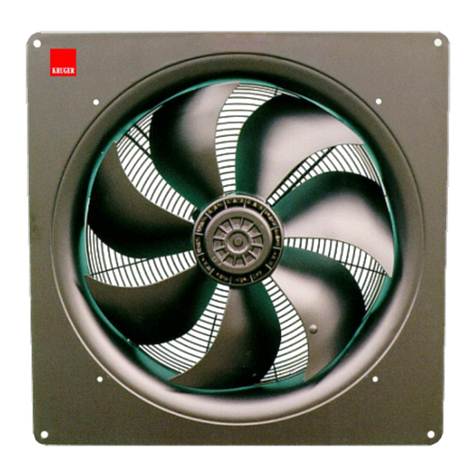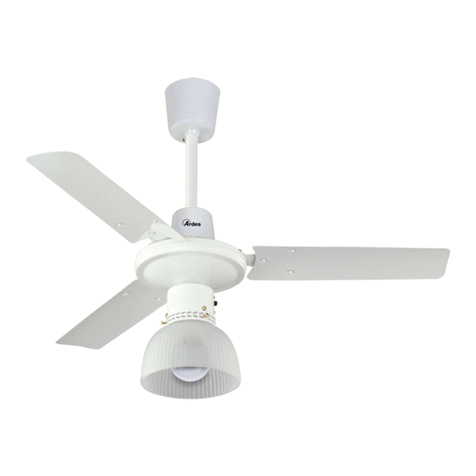Siku SPHERE WiFi 100 User manual

Single-room reversible energy recovery ventilator
USER‘S MANUAL
SIKU SPHERE WiFi 100
SIKU SPHERE WiFi 160
siku.at

CONTENTS
SAFETY REQUIREMENTS
SAFETY REQUIREMENTS
PURPOSE
DELIVERY SET
DESIGNATION KEY
TECHNICAL DATA
UNIT DESIGN AND OPERATING PRINCIPLE
INSTALLATION AND SETUP
CONNECTION TO POWER MAINS AND CONTROL
TECHNICAL MAINTENANCE
STORAGE AND TRANSPORTATION REGULATIONS
MANUFACTURER’S WARRANTY
CERTIFICATE OF ACCEPTANCE
SELLER INFORMATION
INSTALLATION CERTIFICATE
WARRANTY CARD
This user’s manual is a main operating document
intended for technical, maintenance, and operating
staff. The manual contains information about purpose,
technical details, operating principle, design, and
installation of the SIKU Sphere WiFi 100/160 unit and
all its modifications.
Technical and maintenance staff must have theoretical
and practical training in the field of ventilation
systems and should be able to work in accordance
with workplace safety rules as well as construction
norms and standards applicable in the territory of
the country. The information in this user’s manual
is correct at the time of the document’s preparation.
The Company reserves the right to modify the techni-
cal characteristics, design, or configuration of
its products at any time in order to incorporate the
latest technological developments. No part of this
publication may be reproduced, stored in a retrieval
system, or transmitted, in any form or by any means
in any information search system or translated into
any language in any form without the prior written
permission of the Company.
All user’s manual requirements as well as the
provisions of all the applicable local and national
construction, electrical, and technical norms and
standards must be observed when installing and
operating the unit. Disconnect the unit from power
supply prior to any connection, servicing,
maintenance, and repair operations.
Only qualified electricians with a work permit for
electrical units up to 1000 V are allowed for ins-
tallation and maintenance. The present user’s manual
should be carefully read before beginning works.
• Check the unit for any visible damage of the
impeller, the casing, and the grille before
starting installation. The casing internals must
be free of any foreign objects that can damage
the impeller blades.
• While mounting the unit, avoid compression of the
casing! Deformation of the casing may result in
motor jam and excessive noise.
• Misuse of the unit and any unauthorized
modifications are not allowed.
• Do not expose the device to adverse atmospheric
agents (rain, sun, etc.).
• Transported air must not contain any dust or
other solid impurities, sticky substances,
or fibrous materials.
• Do not use the unit in a hazardous or explosive
environment containing spirits, gasoline,
insecticides, etc.
• Do not close or block the intake or extract vents
in order to ensure the efficient air flow.
• Do not sit on the unit and do not put objects on
it.
• The information in this user’s manual was correct
at the time of the document’s preparation.
• The Company reserves the right to modify the
technical characteristics, design, or configuration
of its products at any time in order to incorporate
the latest technological developments.
• No part of this publication may be reproduced,
stored in a retrieval system, or transmitted, in
any form or by any means in any information search
system or translated into any language in any form
without the prior written permission of the
Company.
02
04
04
04
05
06
08
12
28
30
30
31
31
31
31
siku.at

SIKU SPHERE WiFi
3
WARNING! Similar to the use of any other household electrical appliances when operating this fan,
the following basic rules must be followed:
• Never touch the fan with wet or damp hands.
• Never touch the fan when barefoot.
This appliance is not intended for use by persons (including children) with reduced physical, sensory or
mental capabilities, or lack of experience and knowledge, unless they have been given supervision or
instruction concerning use of the appliance by a person responsible for their safety.
Children should be supervised to ensure that they do not play with the appliance.
The connection to the supply mains must be made through a mean for disconnection from the supply mains
having a contact separation in all poles that provide full disconnection under overvoltage category III
conditions, incorporated in the fixed wiring in accordance with the wiring rules.
If the supply cord is damaged, it must be replaced by the manufacturer, its service agent or similarly
qualified persons in order to avoid a hazard.
Ensure that the appliance is switched off from the supply mains before removing the guard.
Precautions must be taken to avoid the back-flow of gases into the room from the open flue of gas or
other fuel-burning appliances.
03
THE PRODUCT MUST BE DISPOSED SEPARATELY AT THE END OF ITS SERVICE
LIFE. DO NOT DISPOSE THE UNIT AS UNSORTED DOMESTIC WASTE.

DELIVERY SET
DESIGNATION KEY
siku.at
PURPOSE
The ventilator is designed to ensure continuous
mechanical air exchange in flats, cottages, hotels,
cafés and other domestic and public premises.
The ventilator is equipped with a regenerator that
enables supply of fresh filtered air heated by means
of extract air heat energy recovery.
The ventilator is designed for wall flush mounting.
The unit is rated for continuous operation.
NUMBER
INDOOR UNIT OF THE VENTILATOR 1 pcs.
AIR DUCT 1 pcs.
SOUND INSULATION MAT 1 pcs.
CARTRIDGE 1 pcs.
OUTER HOOD 1 pcs.
REMOTE CONTROL 1 pcs.
CARDBOARD MOUNTING TEMPLATE 1 pcs.
MOUNTING SET 2 packs
FOAM WEDGES 1 set
INSTALLATION INSTRUCTION 1 pcs.
PACKING BOX 1 pcs.
SIKU Sphere WiFi M
Air damper opening / closing method
_: automatic / manual
Ventilation system model range
SIKU Sphere WiFi 160: Series of reversible, WiFi-controlled
ventilation systems with a duct diameter of 160 mm
and a nominal delivery rate of 50 m³/h,
Length of the ventilation pipe: 500 mm
SIKU Sphere WiFi 100: Series of reversible, WiFi-controlled
ventilation systems with a duct diameter of 100 mm
and a nominal delivery rate of 30 m³/h,
Length of the ventilation pipe: 500 mm

SIKU SPHERE WiFi
5
TECHNICAL DATA
The ventilation system can be used in closed rooms at
temperatures from -15°C to +40°C and a relative
humidity of maximum 80%.
The ventilation system is one of the electrical
Class II ventilation systems.
Degree of protection against ingress of foreign
bodies and Water: IP24.
The model of the ventilation hood and the length of
the Ventilation pipe depend on the device model
(see Designation key).
The construction of the ventilation system is
constantly developed and optimized further, which is
why some Models may differ from the description.
MODELS SIKU SPHERE WIFI SIKU SPHERE WIFI
VENTILATION LEVEL 123123
SUPPLY VOLTAGE VHZ 100 - 240V ~ 50/60 Hz
POWER CONSUMPTION W 1,80 3,00 4,40 1,70 2,60 5,30
CURRENT CONSUMPTION A 0,03 0,04 0,05 0,03 0,03 0,06
DELIVERY RATE IN VENTILATION MODE MH 10 20 30 15 30 50
DELIVERY RATE IN HEAT RECOVERY MODE MH 5 10 15 8 15 25
CONVEYOR TEMPERATURE °C -15...+40 -15...+40
FILTER G3 G3 (F8 optional)
SOUND PRESSURE LEVEL AT M DISTANCE DBA 30 37 40 21 27 29
SOUND PRESSURE LEVEL AT M DISTANCE DBA 21 28 31 12 18 20
EXTERIOR NOISE INSULATION DBA 42 44
HEAT RECOVERY EFFICIENCY % ≤ 81 ≤ 90
OVERALL DIMENSIONS OF THE INDOOR UNIT, MM
TECHNICAL DATA
64
152 248
71
144
305
72
ø 160 mm
ø 103 mm
21
STANDARD IEFE 802,11, b/g/n
FREQUENCY BAND GHZ 2,4
TRANSMISSION POWER MW, DBM 100 (+20)
NETWORK DHCP
WIFI SECURITY WPA, WPA2
TECHNICAL DATA FOR WLAN

siku.atsiku.at
DESIGN AND FUNCTION
The ventilation system consists of an inner element
with a decorative cover, a cartridge, a ventilation
pipe and an external hood.
The cartridge is the most important component of the
ventilation system. The cartridge consists of a fan,
a heat exchanger and two coarse filters that prevent
dust and foreign bodies from entering the heat
exchanger and the fan.
The inner element is equipped with an air flap.
The external hood is mounted on the outside of the
building to prevent water and coarse foreign bodies
from entering the ventilation system.
CONSTRUCTION OF THE VENTILATION SYSTEM
Outer hood
Protects the unit from ingress of
water and foreign objects.
Each ventilator model has a
matching ventilation hood model.
Outer hood
with heating
wire fitted
Sound-absorbing material
A layer of sound-absorbing
material for attenuation of
noise generated during the
ventilator operation.
Indoor unit
The assembly unit includes a circuit board
and basic control units located on the
side of the indoor unit.The design enables
to shut off the air duct in case of an
extended downtime of the ventilator.
Decorative Front Panel
Fulfils the decorative function.
Cartridge
Assembly unit consisting of fans,
a regenerator and air filters.
Generates air flow and provides
energy regeneration.
Air duct
Plastic air duct.
SIKU Sphere WiFi SIKU Sphere WiFi with the
Frost outer hood
(available as an accessory)

SIKU SPHERE WiFi
7
VENTILATOR OPERATION MODES
AIR DAMPER OPERATING PRINCIPLE
The indoor unit of the ventilators has an air damper.
The vertical position of the handle
corresponds to the position OPEN, the horizontal
one to the position CLOSED.
The indoor unit of the SIKU Sphere WiFi ventilator is
equipped with an automatic air damper. It opens at
the beginning of the ventilator’s operation and lets
the air flow freely through the ventilator.
After switching off the ventilator, the damper closes
automatically.The air damper opening and closing
process can take up to five minutes.
Caution! If the power supply is cut off during
operation of the ventilator, after five minutes, the
damper can be manually moved to the CLOSED position
using the handle to prevent drafts.
Later, when the ventilation system is switched on,
the damper opens automatically.
The figure below shows the closed and
open positions of the damper and the lever.
Ventilation: the ventilator runs either in air extrac-
tion or air supply mode at a set speed. In this mode
some of the ventilators in the network run in air
supply mode and the other ones in air extraction
mode, depending on the position of the DIP switch
No. 3 (see section „Setting the ventilator operation
mode using DIP switches“).
Boost: the ventilator goes to the maximum speed
without changing the operation mode.
Regeneration: the ventilator runs in two cycles,
70 seconds each, with heat and humidity regeneration.
Cycle I. Warm stale air is extracted from the room and
flows through the ceramic regenerator, which
gradually absorbs heat and humidity. In 70 seconds,
as the ceramic regenerator gets warmed,
the ventilator is switched to supply mode.
Cycle II. Fresh intake air from outside flows through
the ceramic regenerator, absorbs accumulated
moisture and is heated up to the room temperature.
In 70 seconds, as the ceramic regenerator gets cooled
down, the ventilator is switched to air extraction
mode and the cycle is renewed. If two ventilators are
installed, they operate with opposite rotation
directions in this mode. While one ventilator
supplies air, the other one extracts it.
Air supply: the ventilator operates in supply mode
irrespective of the position of the DIP switch
No. 3 (see section „Setting the ventilator operation
mode using DIP switches“).
The shutter is
closed.
The shutter is open.

siku.atsiku.at
MOUNTING AND SETUP
The figure below shows a schematic representation of the interior elements of the ventilation system
according to the wall thickness. The possibility of mounting the ventilation system in the wall depends
on the cartridge length L and the required protrusion A.
1. Prepare a round core hole in the outer wall.
The figure below shows the minimum distance from the
hole to the surrounding objects. The hole diameter
depends on the specific ventilator model.
The corresponding values are given in the table.
READ THE USER‘S MANUAL BEFORE INSTALLING THE UNIT.
DO NOT BLOCK THE AIR DUCT OF THE INSTALLED VENTILATOR WITH DUST
ACCUMULATING MATERIALS, SUCH AS CURTAINS, CLOTH SHUTTERS, ETC.
AS IT PREVENTS AIR CIRCULATION IN THE ROOM.
WALL THICKNESS IS ABOVE
THE MINIMUM
WALL THICKNESS
IS MINIMAL
VENTILATOR MODEL SIKU SPHERE WIFI SIKU SPHERE WIFI
CARTRIDGE LENGTH L 165 mm 270 mm
HOLE DIAMETER D 120 mm 180 mm
MINIMUM WALL THICKNESS WHEN USING OUTER HOODS FOR
NORMAL WALL THICKNESS ALSO FROST from 155 mm from 260 mm
MINIMUM WALL THICKNESS WHEN USING EXTERNAL HOODS FOR
THIN WALL THICKNESS from 45 mm from 160 mm
A
AA-A
øD
min 200
min 300
min 200
A
A
LL
Air duct length
Wall thickness
Wall thickness is above the minimum Wall thickness is minimal
Outer ventilation
hood
Indoor unit Indoor unit
Cartridge Cartridge
Air duct length
Wall thickness
Outer ventilation
hood

SIKU SPHERE WiFi
9
3. Insert the external ventilation hood.
4. Stick the delivered cardboard master plate on the
indoor wall using a mounting tape. The large opening
in the master plate must be axially aligned with the
air duct. Align the master plate horizontally with a
building level.Then mark the fastening holes for ins-
tallation of the supplied dowels and drill the holes
to a required depth. Route the power cable from the
wall through the marked opening on the template.
2. Insert the ventilation pipe into the wall. Use the
supplied assembly wedges to make assembly easier. On
the outer wall, the ventilation pipe must protrude
from the wall by the distance A, which is required
for the assembly of the external ventilation hood.
The distance A is 0-10 mm.
Install the air duct with the minimum slope of 3 mm
downwards from the outer wall side.
The air duct can be cut by calculating the required
length or after fixing the air duct on the wall
(in this case, it is necessary to have access to
the outside part of the wall).
A
min.
3 mm
Fill the gaps between the
wall and the hole with a
mounting foam.
5. Separate the front of the inner panel from the back. Carefully lift the latches on the top that secure the
front section and open it as shown in the following illustration.
152
72
ø 103
ø 23
ø 160
75
106
136
144
71

siku.atsiku.at
6. Remove the three retaining screws from the left cover to enable access to the terminals.
Route the power wires through the appropriate cable glands.
7. Fix the back part of the indoor unit on the wall with the screws supplied with the mounting kit of the
ventilator.
8. Route the power cable as figured below and connect the ventilator to power mains in compliance with the
external wiring diagram, see section Connection to power mains. Secure the power cable with the clamp.
Transparent cover
Closes the DIP switches.
Right cover
Covers the control
board.
Left cover
Covers the cable entry points and
connection terminals.
Cable glands for
sensor cables.
Cable glands for
power cables.
Circuit Board A3
Circuit Board A1
XP1
XP2
XP3
XP1
GND
N
H1H2IN1IN2
L
IN
12V

SIKU SPHERE WiFi
11
9. After completion of the electrical connection reinstall the left cover in site.
10. Install the cartridge into the air duct as
figured below and connect the connector to the board.
Insert the sound-absorbing layer in the air duct.
Roll the layer of the sound absorbing material to
match the air duct diameter. The protecting paper
layer must be outside. Insert the sound absorbing
roll into the cartridge against stop. Make a mark at
the end of the air duct, remove the material and cut
the roll as marked. Insert the sound absorbing roll
into the air duct.
11. Install the front panel of the indoor unit.

siku.atsiku.at
CONNECTION TO POWER MAINS
POWER OFF THE POWER SUPPLY PRIOR TO ANY OPERATIONS WITH THE UNIT.
THE UNIT MUST BE CONNECTED TO POWER SUPPLY BY A QUALIFIED
ELECTRICIAN. THE RATED ELECTRICAL PARAMETERS OF THE UNIT ARE
GIVEN ON THE MANUFACTURER’S LABEL.
The ventilator is rated for connection to
single-phase AC 100-240 V/50 (60) Hz pow-
er mains. For electric installations use
insulated, flexible conductors (cables,
wires) with the minimum cross section of
0.5 up to 0.75 mm² for power cables and
0.25 mm² for sensor cables. The cable
cross section is given for reference
only. The actual conductor cross-sec-
tion selection must be based on its type,
maximum permissible heating, insulation,
length and installation method.Use copper
wires for all the electric connections!
Connect the unit to power mains via the
terminal block installed in the power
board (A3) in compliance with the wiring
diagram and terminal designation.
Connect the unit to power mains through
the external circuit breaker with a ma-
gnetic trip integrated into the fixed
wiring system. The tripping current of
the circuit breaker is selected based
on the electrical characteristics shown
on the label of the fan casing.The ven-
tilator design enables connecting any
external controls with a normally opened
contact (NO contact), such as an external
CO2 sensor, a humidity sensor, a switch,
etc.When the NO contact of the external
device is closed, the unit changes to the
maximum speed.An analogue sensor with
output voltage 0-10 V is also compatible with the unit.
*The circuit breaker is not included in the delivery set.
EXTERNAL CONNECTIONS DIAGRAM
N
L N
L
In
+12V
XP1
XP1
QF*
H1 H2
XP2
IN1 IN2
XP3
Gnd
Power
100-230V ~ 50/60 Hz
Power to
the next
ventilator
Terminals for connecting
a heated outer hood
Power supply of the
analog sensor maximum
current 100 mA
Input for analog
sensor 0-10V
Electric
shock hazard
Circuit Board A3
Circuit Board A1

SIKU SPHERE WiFi
13
Prior to operating the ventilator set it up using the
DIP switch. It is located on the controller circuit
board.To access the DIP switch, take off the front
panel of the indoor unit and uplift the rubber plug
that covers the switch.
* To form an optimal ventilation mode in the room, it is recommended to use either one or an even number of
networked ventilators. The setting is carried out in such a way that during each operation interval one half
of the ventilators supplies air to the room, and the other half extracts air out of the room.
SETTING THE VENTILATOR OPERATION MODE USING DIP SWITCHES
1 2 3 4
ON
DIP switch
under the
cover
SETTING THE ROLE OF THE VENTILATOR IN THE NETWORK
ON: slave unit (hereinafter referred to as “Slave unit”)
OFF: master unit (hereinafter referred to as “Master unit”)
STANDBY MODE SETUP
Min – the ventilator operates at Speed I in the Standby mode.
OFF – the ventilator is switched off in the Standby mode.
SETTING OF THE FAN ROTATION DIRECTION*
ON: in the Ventilation mode the ventilator supplies the air to the room.
In Regeneration mode the ventilator starts operating first in supply mode.
OFF: in the Ventilation mode the ventilator extracts the air from the room.
In Regeneration mode the ventilator starts operating first in extract mode.
RESTORE FACTORY DEFAULT SETTINGS
ON: restore factory default settings. For this purpose, move the switch on the operating ventilator
to the ON position, after the sound signal turn the switch to the OFF position.
OFF: standard operation of the unit.

siku.atsiku.at
VENTILATOR CONTROL
VENTILATOR CONTROL WITH THE BUTTONS ON THE INDOOR UNIT
The ventilator is operated with:
• infra-red remote control
• control buttons located on the side of the indoor unit (see the figure below)
• „SIKU RV WIFI“ application from a mobile device (smartphone or tablet)
Regeneration mode
In this mode the unit switches
between the supply and the
extraction mode severy 70
seconds with heat recovery.
Ventilation mode
The ventilator operates in
the supply or extraction mode
at a set speed.
Speed/Standby
The speed selection sequence is
as follows: I-II-III-Standby.
Turning the ventilator
on/off
Speed
selection
Party mode
Activation of Speed III by the
timer (4 hours by default).
Night mode
Activation of Speed I by the
timer (8 hours by default).
DESCRIPTION OF THE BUTTONS ON THE INDOOR UNIT
The speed selection sequence is follows: I-II-III-Standby. All the units integrated in
a single network operate according to the speed settings of the Master unit.
I: permanent indicator glowing indicates operation of the unit at Speed I.
Indicator blinking indicates activation of the Night mode timer.
I and II: permanent glowing of these indicators indicates operation of the unit at
Speed II.
I, II and III: permanent glowing of these indicators indicates operation of the
ventilation unit at Speed III. Synchronous blinking of the indicators I, II and III
indicates activation of the timer in Party mode or the turn-off delay timer in the Boost
mode in case of actuation of the connected external sensors or the integrated humidity
sensor.Alternate blinking of the indicators I, II and III indicates that the ventilator
runs at the speed set with the mobile application using the slider selector for manual
speed setting or that the Weekly Schedule mode is activated.

SIKU SPHERE WiFi
15
Regeneration mode
The rotation direction of both fans changes to opposite every 70 seconds.
Heat recovery is performed in this mode. To enable reverse phase operation of the
ventilators, change the position of the DIP switch No. 3.
Ventilation mode
The ventilator operates in the supply or extraction mode at a set speed.
The fan rotation direction depends on the position of the DIP switch No. 3.
No glowing of the indicators „Regeneration“ and „Ventilation“ indicates forced operation of the ventilation
unit in the air supply mode. This mode may be activated only via the mobile application.
FILTER
90 days after installation of the cartridge the filter replacement indicator starts
glowing. In this case, clean or replace the filters (see section Technical maintenance).
After replacement or cleaning of the filters reset the timer using the mobile application
or by pressing and holding the button on the Master ventilator indoor unit for 5
seconds until a signal sounds.
ALARM
Alarm indicator
In case of failure, the Alarm indicator on the indoor unit glows or blinks.
Reasons of Alarm blinking:
• Battery charge is below the low level.
• No connection between the Master unit and the router.
• Alarm shutdown of the ventilator.
If several connected ventilation systems are running in a network, the master unit and
all other ventilation systems in the series are also switched off in the event of an
alarm. The alarm indicator of the faulty ventilation system flashes. At the same time,
the master display flashes on the connected ventilation systems that have been switched
off. In case of communication loss of the Master unit with the router for longer than
20 seconds, the Master unit switches to Standby mode (Alarm indicator blinking) and the
Slave units will signal that there is no communication with the Master unit (see the de-
scription of the Master indicator). After resuming communication,
the Slave units are automatically synchronised with the Master unit.
MASTER
Permanent glowing of the indicator shows the leading unit in the network (Master unit).
Indicator blinking indicates the driven unit (Slave unit) and no connection to the
Master unit.
No glowing of the indicator means that this ventilator is a Slave unit and it is
connected to a Master unit.
Synchronous blinking of all the indicators on the casing of the ventilator indicates that the Setup mode is enabled.

siku.atsiku.at
DESCRIPTION OF THE BUTTONS ON THE REMOTE CONTROL
VENTILATION UNIT OPERATION WITH THE MOBILE APPLICATION
ON/Standby
The Standby mode depends on the position of the DIP switch 2 (see section Setting the
ventilator operation mode using DIP switches). The same button is used to reset alarms
(Alarm) and to turn off the timers.
Ventilator speed selection: Speed III-II-I respectively.
Regeneration mode
The rotation direction of both fans changes to opposite every 70 seconds.
Heat recovery is performed in this mode. The fan rotation direction depends on the
position of the DIP switch 3.
Ventilation mode
The ventilator operates in the supply or extraction mode at a set speed.
The fan rotation direction depends on the position of the DIP switch 3.
Timer control buttons
Party mode: the timer activates operation of the unit at Speed III for a
set time period, 4 hours by default. The timer setting may be changed during setup
of the unit on the mobile device.
Night mode: the timer activates operation of the ventilation unit at Speed I for
a set time period, 8 hours by default. The timer setting may be changed during setup of
the unit on the mobile device.The ventilation unit reverts to operation with a previous
speed setting upon elapse of the set time period. Press any speed setting key to
deactivate the timer or press the timer control button once again.
To enable operation of the unit with a mobile device, install the SIKU RV WIFI application to your
mobile device.
• Your mobile device must have an operating system matching the following parameters:
• iOS – 8 or later. Compatible with iPhone, iPad, iPod.
• Android – 4 or later.
SIKU RV WIFI APP STORE SIKU RV WIFI PLAY MARKET

SIKU SPHERE WiFi
17
MOBILE APPLICATION CONNECTION TO THE VENTILATOR
Download the SIKU RV WIFI application and install it on the mobile device.
By default, the ventilator operates as a Wi-Fi access point. Connect the mobile device to the Wi-Fi access
point (FAN: + 16 characters of the ID number) indicated on the control board of the ventilator.
Wi-Fi access point password: 11111111.
Following message is displayed when launching the application without connection to the ventilator:
Enter the SIKU RV WIFI app and create a new connection by following the steps below:
1. Enter the app menu.
2. Select Connection – At home.
3. If the mobile device is connected to the Wi-Fi access point of the unit without a router,
select the Default connection.
4. In case of connection via a router, search for network settings.
5. Find the new connection in the list and highlight its ID.
6. Edit the connection details.
7. If necessary, rename the connection and enter a ventilator password.
By default the ventilator password is 1111. (automatically inserted in the input line).
CAUTION!!! At this stage the password for the ventilator cannot be changed.
8. Confirm the updated details.
Once the connection has been established, go to the app menu and choose CONTROL.
Warning!
No communication with the device!
Check the connection.
1 2 4 56 873

siku.atsiku.at
DESCRIPTION OF MOBILE APPLICATION CONTROL BUTTONS
ON/Standby. The Standby mode mode depends on the
position of the DIP switch No. 2 (see section Setting
the ventilator operation mode using DIP switches).
Selection of the preset speed:
Speed I, II and III respectively.
Manual speed setup.
To activate the scroll bar, check it.
Ventilation
The ventilator operates in the supply or extraction mode
at a set speed. The fan rotation-direction depends
on the position of the DIP switch 3.
Regeneration mode
The rotation-direction of both fans changes to opposite every 70 seconds.
Heat recovery is performed in this mode.
Air supply mode
The ventilation unit operates exclusively in air supply mode.
Night mode
Activation of Speed I timer without changing the ventilator operation mode
(8 hours by default, adjustable in the Settings – Timers menu).
Weekly schedule
Party mode
Activation of the Speed III timer without changing the ventilator operation mode
(4 hours by default, adjustable in the Settings – Timersmenu).
DESCRIPTION OF MOBILE APPLICATION INDICATORS
Current type of connection to the ventilator.
Home connection or connection via a cloud server through Internet respectively.
Speed III activation indicator. It goes on after activation of any sensor.
When this mode is activated, all the other modes are deactivated. Upon elapse of the
turn-off delay timer countdown (30 minutes by default) the ventilation unit reverts to
the previous mode. Press Power to deactivate this operation mode.
Humidity indicator. It glows if the indoor humidity is above the set point.
Indicator of external relay sensor. It glows if the external relay sensor is activated.

SIKU SPHERE WiFi
19
Indicator of the external analogue sensor 0-10 V.
It indicates exceeding the setpoint on the external sensor.
Alarm indicator
It glows in emergency case and can be of two colours:
Red lights up in case of emergency shutdown of the ventilator.
Orange lights up in case if there is no battery or the battery is low.
Filter replacement indicator
To reset the filter timer, go to Menu - Settings - Filter.
When simultaneously activating several operation modes that exclude each other, the ventilator selects the
mode according to the following priority:
1. Night mode timer or Party mode timer.
2. Standby.
3. Boost mode.
4. Weekly Schedule.
5. Regular mode
VENTILATOR PASSWORD CHANGE
To change the ventilator password in the mobile
device application, go to Menu - Connections - Home.
1. Choose the connection and press the Settings button.
2. Enter and confirm the password.
3. Press the Change Password button.
AIR FLOW SETTING
To set the air flow corresponding to each of the
three speed modes, go to Menu – Setting - Air flow.
Set the fan speed as a percentage for each speed
mode.
The Air flow menu displays and allows setting the
speed modes only for the ventilator, which is set as
the Master in the ventilator network. Therefore, if
the ventilator is a Slave unit in the network of ven-
tilators, it must be switched to the Master mode for
speed setting. Then connect to this Master unit via
Wi-Fi and adjust the fan speed values via the mobile
app.Revert the unit to the Slave mode by means of DIP
switch. After all Slave ven-
tilators have been set in this
way, when the Master ventilator
is switched on to one of the
three speed modes, the fans of
each Slave ventilator will rot-
ate at the speed that was set
on it for this speed mode.
1 2 3
Air flow
Speed 1
Speed 2
Speed 3

siku.atsiku.at
TIMERSETTING
DATE AND TIME SETUP
SENSOR SETUP
To set the „Night mode“, „Party mode“ timer and the turn-off delay timer for the
Boost mode, go to Menu – Settings – Timer in the mobile application.
The Night mode timer sets the delay for the ventilator to switch to Speed I after the
Night mode activation (8 hours by default).
The Party timer defines the delay for the ventilator to switch to Speed III after
the Party mode activation (4 hours by default).
The turn-off delay timer for the Boost mode defines the delay time for operation at
Speed III after the actuation of any of the sensors and their return to the standard
state.
To set the date and time of the ventilation system, open
Menu - Settings – Date and time.
Current time: set the current time.
Current date: set the current date.
To set up sensor operation via the mobile app, go to
Menu - Settings - Sensors.
Humidity sensor: activation of the humidity sensor.
When the indoor humidity exceeds the set point, the unit switches to Speed III.
When the humidity level drops below the threshold value, the Boost turn-off delay
timer is activated. When the timer elapses, the ventilator reverts to the previous
speed setting.
0-10V sensor: activation of the external analogue sensor 0-10 V.
When a 0-10 V control signal value exceeds the set point, the ventilation unit
changes to the maximum speed. When the signal drops below the threshold value,
the Boost turn-off delay timer is activated. When the timer elapses, the ventilator
reverts to the previous speed setting.
Relay sensor: activation of the external relay sensor.
When the no-contact of the external relay sensor is closed, the unit changes to the
maximum speed. Upon the opening of the NO-contact the Boost turn-off delay timer is
activated. When the timer elapses, the ventilator reverts to the previous speed setting.
This manual suits for next models
1
Other Siku Fan manuals
